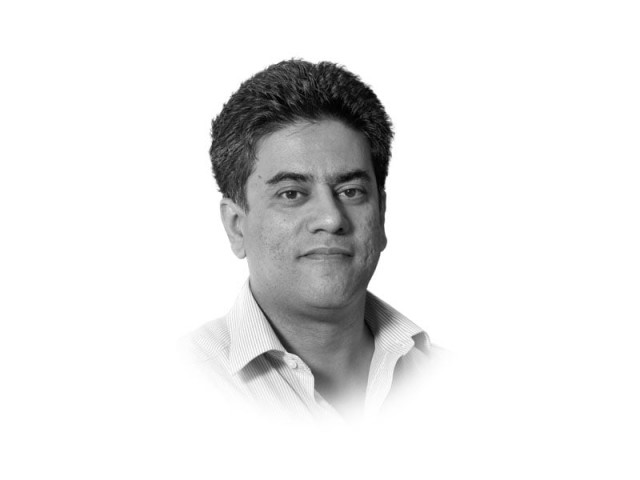
It was a sobering experience – here was buried the emperor of what was once the largest empire in South Asia.
There are many lessons to learn here. For example, how the Mughals rose to prominence and then lost it all due to their poor governance and lack of investment in learning and technology, happy instead to spend money on their pleasures.
In the words of British orientalist, Stanely Lane-Poole, “As some imperial corpse preserved for age in its dead seclusion, crowned and armed and still majestic, yet falls to the dust at the breath of heaven, so fell the Empire of the Mughals when the great name that guarded it was no more.”
Historians say that it was the degeneration and demoralisation of the Mughals that eventually led to their fall. One wonders whether as Pakistanis, our rulers also face the same fate given their corruption and maladministration. But Pakistanis are not one to learn from history.
One of the trustees of the shrine, Alhaj Eyelwin, told me that the shrine is mostly visited by Indians as well as Burmese Muslims. Almost no Pakistanis venture here. There was a lack of Pakistanis on August 14 but I was told Indians come here on their independence day (August 15) to pay respects to the last Mughal who was also the titular head of the 1857 war of independence.
In 2012, it was President Zardari who made a donation to the shrine but this was immediately matched by the Indian government for the same amount. Earlier, President Musharraf promised funds but they never materialised.
Coming back to Bahadur Shah Zafar, the British wanted to set an example: the last Mughal king’s grave was deliberately kept secret when he died in 1862 and was only discovered in 1991 by accident. Since then the Myanmar government has helped maintain the site.
What is interesting is that while the last Mughal emperor was sent to exile by the British to Yangon in 1858, the last Burmese King, Thibaw Min, was exiled by the same British administration to India in 1885 after his empire was also annexed. Burma was made a province of the Indian empire as well. The similarities do not end there. Both emperors died in reduced circumstances and were never able to return to their home. Their descendants today live in poverty. As far as religious communities are concerned, the Burmese enjoyed prosperity in the Indian sub-continent. The same cannot be said for the Muslim communities in Burma.
Many communities were forced to leave Yangon in the ’60s by military strongman Ne Win, who introduced the concept of Buddhist nationalism. That concept remains today. Today the Muslims of Myanmar are not a happy lot. I recall as I checked in for my flight to Myanmar, the lady at the Thai counter asked me why I was going and when I replied, asked me to write more about the Rohingyas.
In Myanmar, the issue is more than just of the Rohingyas. In my discussion on the Rohingyas, a number of Myanmar activists insisted that most of those who claim to be Burmese were actually Bengalis. Possibly this is not entirely the case. Others talked about the nature of Buddhist nationalism, which has been the guiding ideology for Myanmar over the years.
While there are a number of mosques dotting the landscape in Yangon, many Muslims complain that they continue to be marginalised. They complain that they are not given government jobs, denied identity cards and actively discouraged from politics.
There are almost no Muslims in the armed forces, which was not the case in the past, say many. Their hope now comes in the form of elections which are to be held later this year in November.
It is in all these things that the similarities with present day Pakistan are hard to ignore. The treatment of religious minorities and marginalized communities for one, and the experiments with controlled democracy for another.
While one hopes for free and fair elections and a peace in Myanmar for the coming months, realistically this will be a challenging time.
Published in The Express Tribune, August 17th, 2015.
Like Opinion & Editorial on Facebook, follow @ETOpEd on Twitter to receive all updates on all our daily pieces.














COMMENTS
Comments are moderated and generally will be posted if they are on-topic and not abusive.
For more information, please see our Comments FAQ